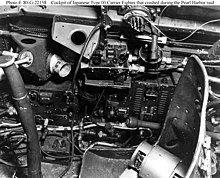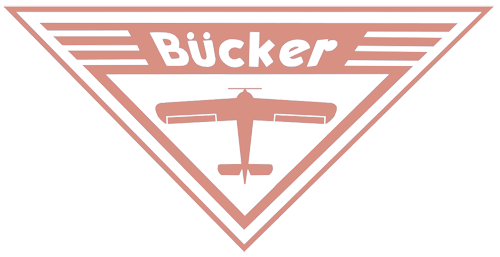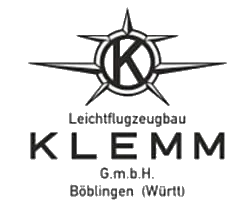Mitsubishi Motors
A6M Zero "Zeke"
|
|||||||||||||||||||||||||||||
.
History Mitsubishi Motors
Mitsubishi (A6M2 (Type 0 Model 21)
(or Reisen), though the Allies code-named it "Zeke."

The Mitsubishi A6M "Zero" is a long-range carrier-capable fighter aircraft formerly manufactured by Mitsubishi Aircraft Company, a part of Mitsubishi Heavy Industries. It was operated by the Imperial Japanese Navy (IJN) from 1940 to 1945. The A6M was designated as the Mitsubishi Navy Type 0 carrier fighter (零式艦上戦闘機, rei-shiki-kanjō-sentōki), or the Mitsubishi A6M Rei-sen. The A6M was usually referred to by its pilots as the Reisen (零戦, zero fighter), "0" being the last digit of the imperial year 2600 (1940) when it entered service with the IJN. The official Allied reporting name was "Zeke", although the name "Zero" was used colloquially as well.
Development
The first 76 aircraft entered service by 2008, with a total of 98 airframes produced. The first active electronically scanned array (AESA) radar on a combat aircraft was the J/APG-1 introduced on the Mitsubishi F-2 in 1995. The F-2 is nicknamed "Viper Zero", a reference to the F-16's unofficial nickname of "Viper" and the Mitsubishi A6M Zero.
Operational history


The first Zeros (pre-series of 15 A6M2) went into operation with the 12th Rengo Kōkūtai in July 1940. On 13 September 1940, the Zeros scored their first air-to-air victories when 13 A6M2s led by Lieutenant Saburo Shindo, escorting 27 G3M "Nell" medium-heavy bombers on a raid of Chongqing, attacked 34 Soviet-built Polikarpov I-15s and I-16s of the Chinese Nationalist Air Force, claimed "all 27" of the Chinese fighters shot down without loss to themselves. However Major Louie Yim-qun had in fact nursed his I-15 riddled with 48 bullet holes back to base, and Lieutenant Gao Youxin claimed to have shot down one Zero, but at most 4 Zeroes sustained some damage in the 1/2 hour-long dogfight over Chongqing. By the time they were redeployed a year later, the Zeros had shot down 99 Chinese aircraft (up to 266 according to other sources).
At the time of the attack on Pearl Harbor, 521 Zeros were active in the Pacific, 328 in first-line units. The carrier-borne Model 21 was the type encountered by the Americans. Its tremendous range of over 2,600 kilometres (1,600 mi) allowed it to range farther from its carrier than expected, appearing over distant battlefronts and giving Allied commanders the impression that there were several times as many Zeros as actually existed
0
KmCeiling
0
KmCombat RANGE
0
Km/hAircraft Speed
0
Max Crew
Photo Gallery
Mitsubishi Motors Mitsubishi (A6M2 (Type 0 Model 21)
(or Reisen), though the Allies code-named it "Zeke."


Mitsubishi (A6M2 (Type 0 Model 21)
(or Reisen), though the Allies code-named it "Zeke."
Mitsubishi Motors
Mitsubishi (A6M2 (Type 0 Model 21)
(or Reisen), though the Allies code-named it "Zeke."
General Info
-
-
- Crew: 1
- Length: 9.06 m (29 ft 9 in)
- Wingspan: 12 m (39 ft 4 in)
- Height: 3.05 m (10 ft 0 in)
- Wing area: 22.44 m2 (241.5 sq ft)
-
Powerplant
-
-
- Empty weight: 1,680 kg
- Gross weight: 2,796 kg
- Max takeoff weight: 2,796 kg
- Fuel capacity: 518 L (137 US gal; 114 imp gal) internal + 1 × 330 L (87 US gal; 73 imp gal) drop tank
- Powerplant: 1 × Nakajima NK1C Sakae-12 14-cylinder air-cooled radial piston engine, 700 kW (940 hp) for take-off
-
-
- 710 kW (950 hp) at 4,200 m (13,800 ft)
-
-
-
-
Performance
- Maximum speed: 533 km/h (331 mph, 288 kn) at 4,550 m
- Cruise speed: 333 km/h
- Never exceed speed: 600 km/h (370 mph, 320 kn)
- Range: 1,870 km
- Ferry range: 3,102 km
- Service ceiling: 10,000 m
Armament
-
- Guns:

Divergence of trajectories between 7.7 mm and 20 mm ammunition
- 2 × 7.7 mm (0.303 in) Type 97 aircraft machine guns in the engine cowling, with 500 rounds per gun.
- 2 × 20 mm (0.787 in) Type 99-1 Mk.3 cannon in the wings, with 60 rounds per gun.
- Bombs:
- 2 × 60 kg (130 lb) bombs or
- 1 × fixed 250 kg (550 lb) bomb for kamikaze attacks
-
-
- Guns:
.
Mitsubishi (A6M2 (Type 0 Model 21)
(or Reisen), though the Allies code-named it "Zeke."
Links to Youtube & Others
The JASDF and its contractors considered developing a Japanese-designed, Japanese-produced replacement for the aging Mitsubishi F-1 fighter as early as 1981. A formal feasibility study commenced in 1985.
Mitsubishi Motors
A6M Zero "Zeke"
Japan's initial intentions to develop the aircraft domestically built upon Japan's previous success in producing the F-15J fighter under license from McDonnell Douglas
Youtube Link
Japan's initial intentions to develop the aircraft domestically built upon Japan's previous success in producing the F-15J fighter under license from McDonnell Douglas














